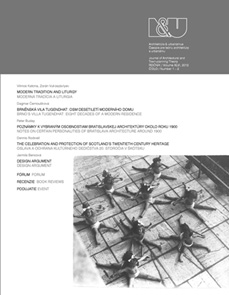MODERN TRADITION AND LITURGY. The Ways of Modernism in Hungarian Church Architecture in 20th Century
MODERN TRADITION AND LITURGY. The Ways of Modernism in Hungarian Church Architecture in 20th Century
Author(s): Vilmos Katona, Zorán VukoszávlyevSubject(s): Cultural Essay, Political Essay, Societal Essay
Published by: Historický ústav SAV, v. v. i.
Keywords: Modernism; liturgy; Communio; Roman School; reform movement; central; longitudinal
Summary/Abstract: Hungarian church architecture of the 20th century accurately reflects the European historical and artistic development processes of the given period. Though this century was typified by its enriching of the region by presenting the values of individuality, at several points it is still possible to observe the continuity of forms, structures or the craft itself related to foreign connections can be observed at several points. The architectural consensus of buildings designed by architects working in parallel cannot always be derived from the activity of any architectural school. However, it can be noted in general that the spirit of the modern age demanded everywhere the overcoming of the ideals of historism bound by formalities with the help of the liberating facilities of technology, and by presenting their philosophical, aesthetical and economical values. Nevertheless, the intrinsic contradictions of the Modern Movement, which had defined itself only in an unsatisfactory way regarding the matter of tectonics, historic and space context and architectural immanence, were manifested in an apparent break in sacral architecture rooted in liturgical traditions. Though in the third quarter of the century we can find examples of even some industrial-constructivist interpretations of sacral buildings, from the point of view of new social demands and technology the Church’s changed role can be defined only temporarily or incompletely. We also have to take into consideration the iconological hiatus that arose from the modernist repudiation of the spatial and textual symbolic order that had previously existed in historism, in the church architecture of Art Nouveau or in the Hungarian national movement at the turn of the century. The iconological patterns were dissolved in the expressive form, in the avant-garde reduction of liturgical arts and in the space-topography; while the liturgical spaces cleansed of narratives and allegories emphasized the independence of holiness from space and time as well as its direct and universal aspect. Consequently, this purity of sacral spaces was attached to the development of a religious community into an intellectual centre, while the uniqueness of the liturgical word, which was just being born, was connected to the specialty and singleness of individual spaceformation. It may seem rather contradictory that in the decades when the experimental form of modernity spread through Europe, Hungarian church architecture of the period between the two world wars was much more connected to historical archetypes, to ‘common taste’ and to the emphasis on the community creating the role of the church than the Hungarian state architecture of the era after World War II, in which architecture professed social realism, the will of people and communism, but soon performed a complete turn to modernism. After the liquidation of the communist regime, the liturgical architecture of the era had the chance to take inspiration...
Journal: Architektúra & Urbanizmus
- Issue Year: 46/2012
- Issue No: 1-2
- Page Range: 2 - 23
- Page Count: 22
- Language: English

